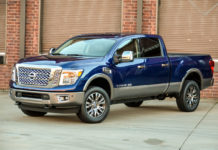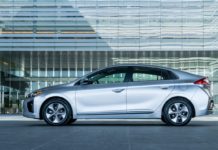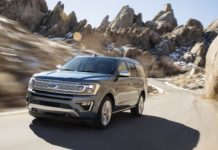Jaguar says its mission today is simple: Produce fast, beautiful cars that are desired worldwide.
But can Jaguar really survive in today's world without a truck?
|
|
Or at least something that looks like a truck?
The Lexus RX330 is the best-selling model of the best-selling luxury brand, and it's a crossover — a vehicle that's built on a car platform but offers the same kind of utility and appearance as an SUV.
BMW, meanwhile, has its X3 and X5 SAVs, short for sports-activity vehicles.
Acura has its MDX. Mercedes has its M-Class. Porsche even has its Cayenne.
These vehicles have played key roles in boosting the sales for their luxury brands, said Tom Libby, director of industry analysis for the Power Information Network, a subsidiary of J.D. Power and Associates.
But the closest Jaguar comes to offering truck-like utility is its X-Type sportwagon. The wagon is a utilitarian version of Jaguar's best-selling, entry-level vehicle, the X-Type. But the X-Type has been chastised as hurting Jaguar's brand image by being too bland and affordable for the exclusive brand
With no Jag crossover to choose, Jaguar customers have been left dreaming about what one could look like. Some experts said they envision a crossover that is sexier than anything else on the market, with its familiar, exclusive hood ornament.
For now, this much is clear: The lack of a crossover or SUV seems to be costing Jaguar customers.
Jaguar nameplate loyalty has dropped by more than half since 2003, and part of that decline is caused by Jaguar customers trading in their cars for trucks, or vehicles that look like trucks.
In all, more than 30% of customers who trade in a Jaguar for a new vehicle move to a pickup, van or SUV, the Power Information Network reports. The biggest share, 23%, choose a utility vehicle.
And, PIN says, few of those customers trade into a Land Rover, which Ford has arranged in its portfolio as the truck-brand companion to the car-centric Jaguar.
Of 178 Jaguar dealer franchises in the United States, 63 — or 35% — are partnered with Land Rover dealerships. Despite that, fewer than 2% of new vehicle buyers who trade in a Jaguar move to a Land Rover, PIN data show.
Mike O'Driscoll, president of Aston Martin, Jaguar and Land Rover North America, didn't discourage the notion that a crossover might eventually fit into Jaguar's self-proclaimed lineup of “Fast, Beautiful Cars.” But he also didn't suggest it might be soon in the offing.
“I certainly think there's more fluidity to the segment than there ever was,” he said of the car segment, noting how the lines are blurring between cars and trucks with crossovers.
“What I would say is that our focus, certainly in the medium term, is in the sedan and sports car markets,” he said. “But … there is so much untapped potential that Jaguar has the potential to realize. We certainly don't need to be in the crossover or SUV business to do well.
“Now, that doesn't rule out the potential, longer-term of a crossover. I'd never do that.”








